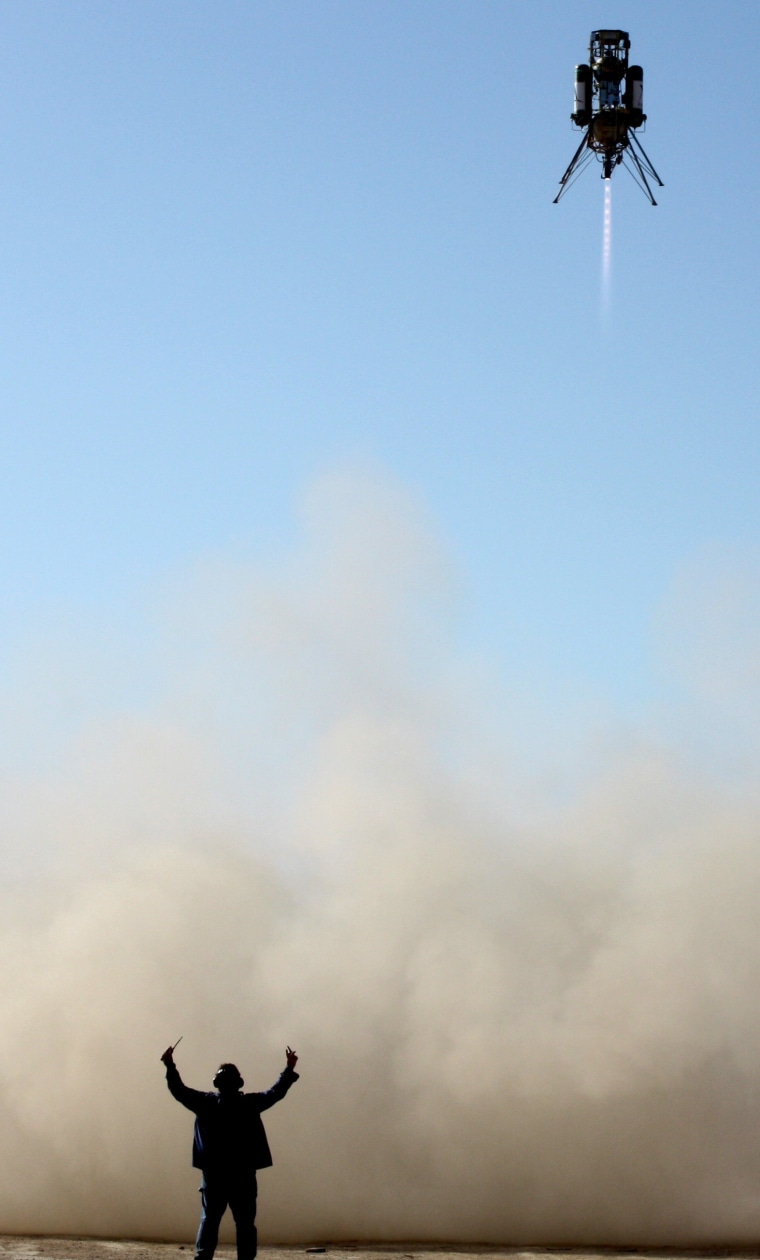NASA may have put its plans to send people to the moon on hold, but that doesn't mean robots can't go. Today, XCOR Aerospace and Masten Space Systems announced they were teaming up to develop robotic landers that could go to the moon, to asteroids, to Mars or anyplace else NASA wants them to visit. It's an interesting pairing: Masten has been working on vertical-takeoff lunar lander prototypes for years, and last year the Masten team won more than $1 million of NASA's money in the Northrop Grumman Lunar Lander Challenge. XCOR has worked on a methane-powered rocket engine for NASA, and is currently focused on building a series of horizontal-takeoff rocket planes that could eventually go to the edge of space. XCOR's chief executive officer, Jeff Greason, was an outspoken member of the independent panel that laid out NASA's options for future space exploration - including the "flexible-path" option that the White House eventually chose. That option calls for the cancellation of NASA's Constellation back-to-the-moon program, and proposes instead that the human spaceflight program should look first toward lower-gravity destinations such as asteroids and Martian moons. You'll probably hear a lot more about the rightness or wrongness of NASA's revised vision on Wednesday, when moonwalkers Neil Armstrong and Gene Cernan testify at a House committee hearing. Armstrong and Cernan struck sparks earlier this month when they criticized the new space policy at a Senate committee hearing. That debate doesn't directly affect what NASA does with its robotic exporation program, however. XCOR and Masten said they expect NASA to go forward with a series of unmanned lander projects. "These automated lander programs are expected to serve as robotic test beds on Earth, on the lunar surface, Mars, near-Earth objects and other interplanetary locales, helping NASA push the boundaries of technology and opening the solar system for future human exploration," today's announcement says. These two "New Space" companies aren't the only ones looking for lander business, however. You can bet that the competitors will include the same companies that have worked on landers for the moon and Mars in the past: Lockheed Martin, the Boeing Co. and Northrop Grumman. Other companies could enter the fray as well. For example, some folks have been talking about a NASA-developed "Project M" that would send a humanoid robot to the lunar surface. Clark Lindsey at Space Transport News points out that the Johnson Space Center engineers responsible for the Robonaut project have detailed their Project M concept in a white paper posted to their website. The paper says a prototype lander has been assembled and is to undergo free flight testing as early as this month. The company that is helping develop the prototype is none other than Armadillo Aerospace, which vied against Masten in last year's Lunar Lander Challenge and may compete with XCOR for space tourism dollars. This could get interesting, especially when you consider that 21 other private-sector teams are also shooting for a moon landing as part of the $30 million Google Lunar X Prize competition. And then there are the Chinese, and the Indians ... Who's up for a robotic moon race?
Shooting for the moon
